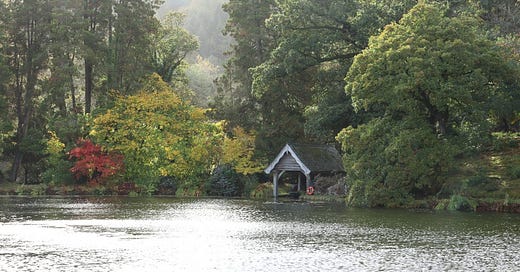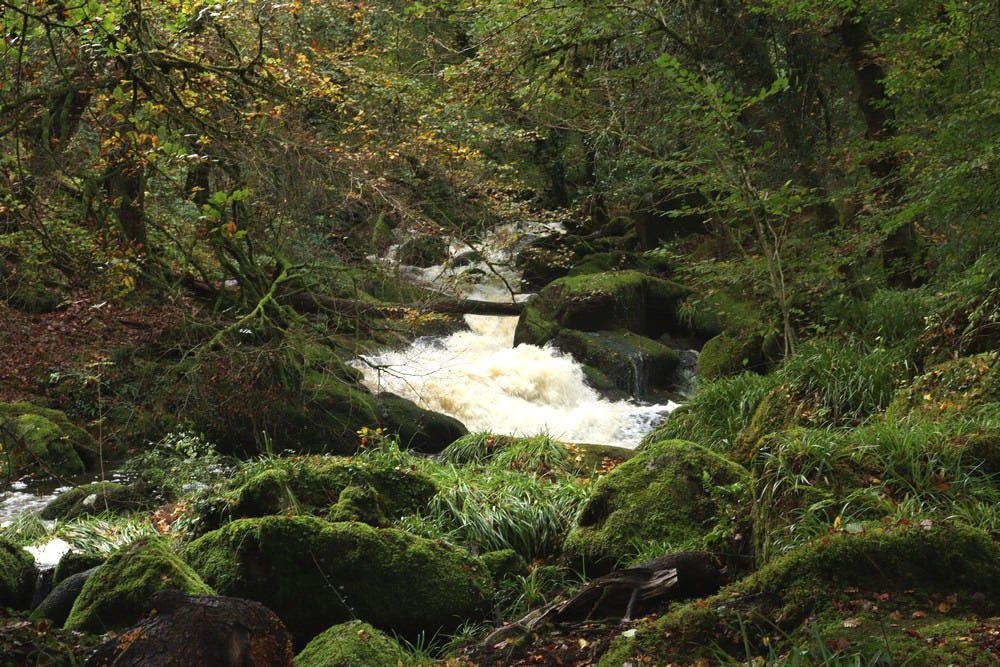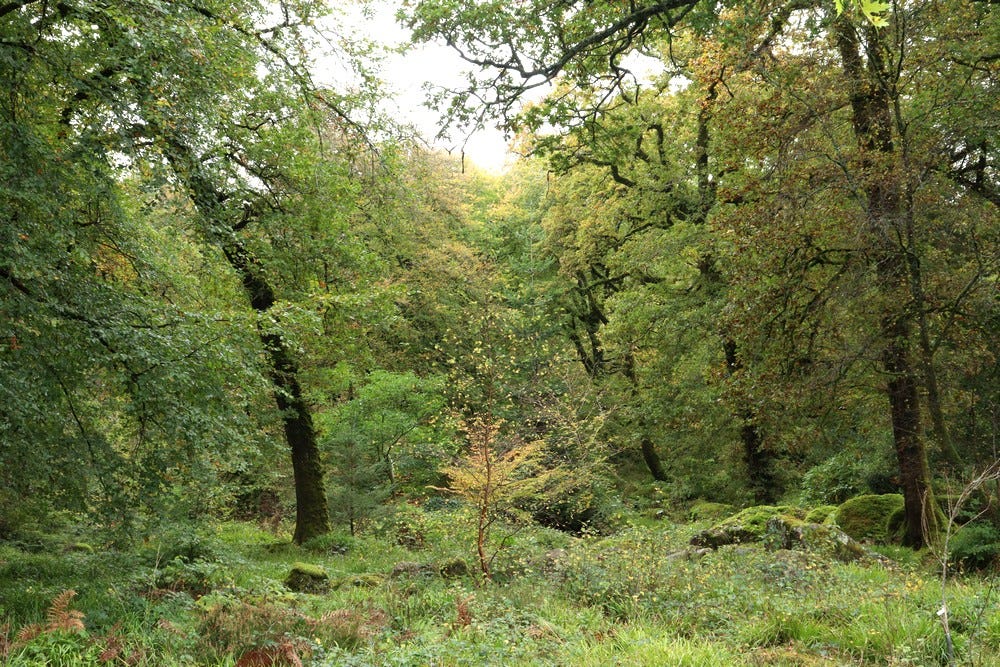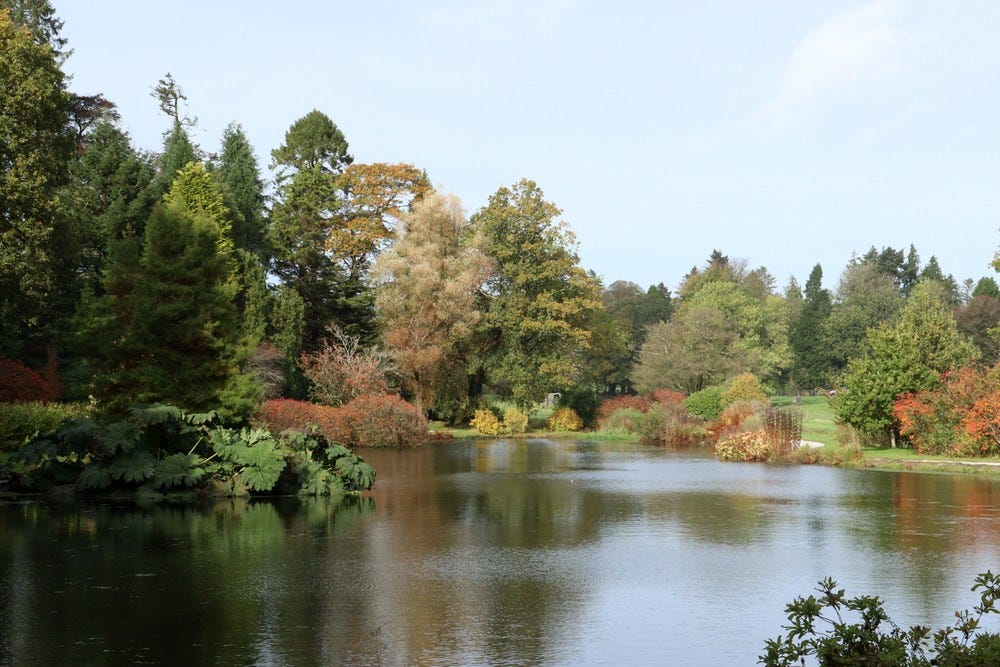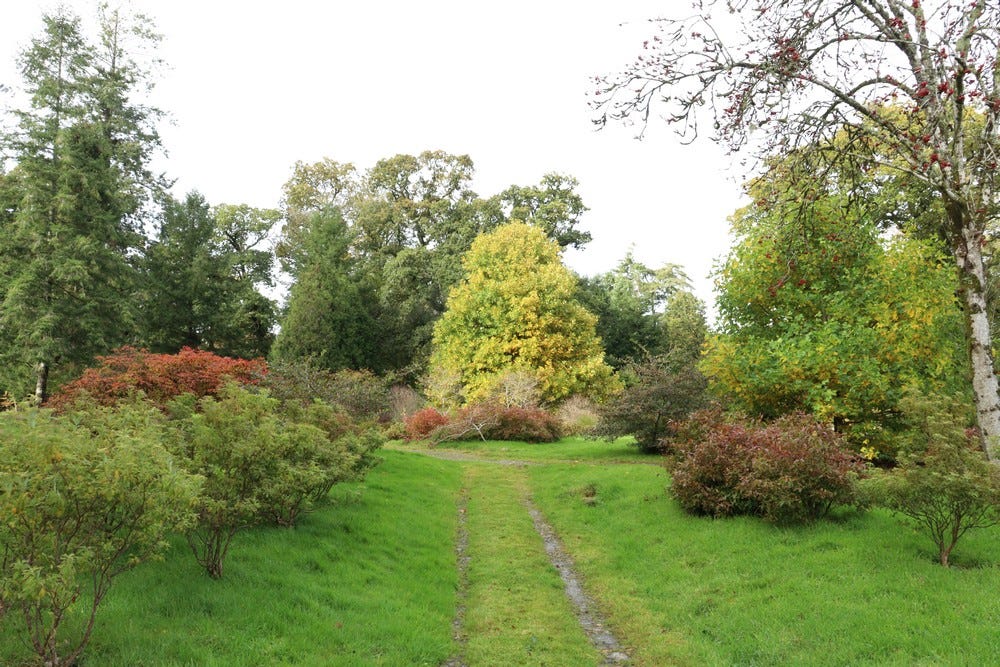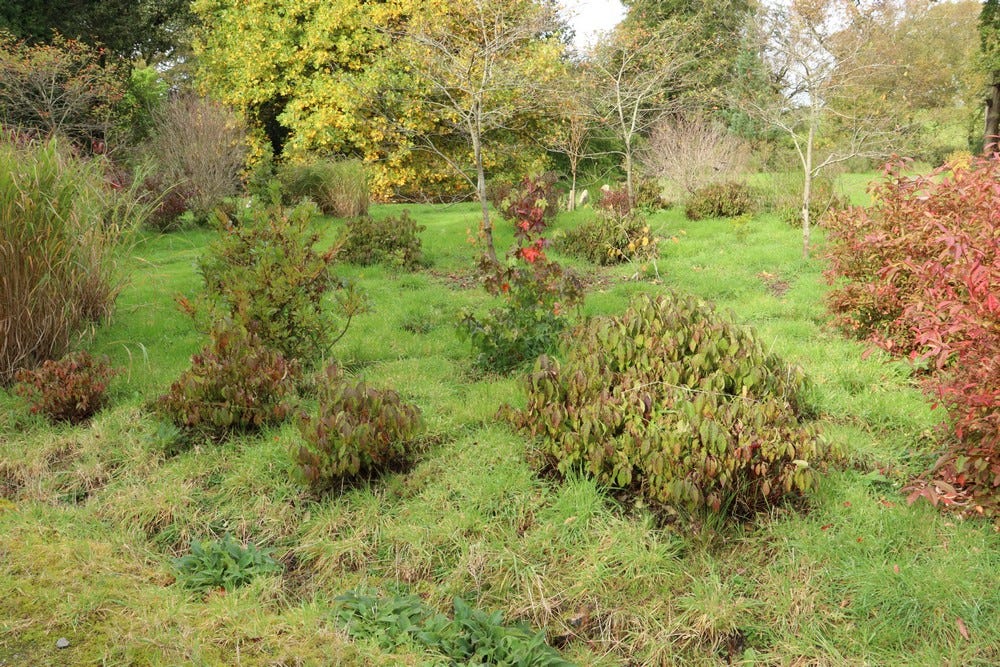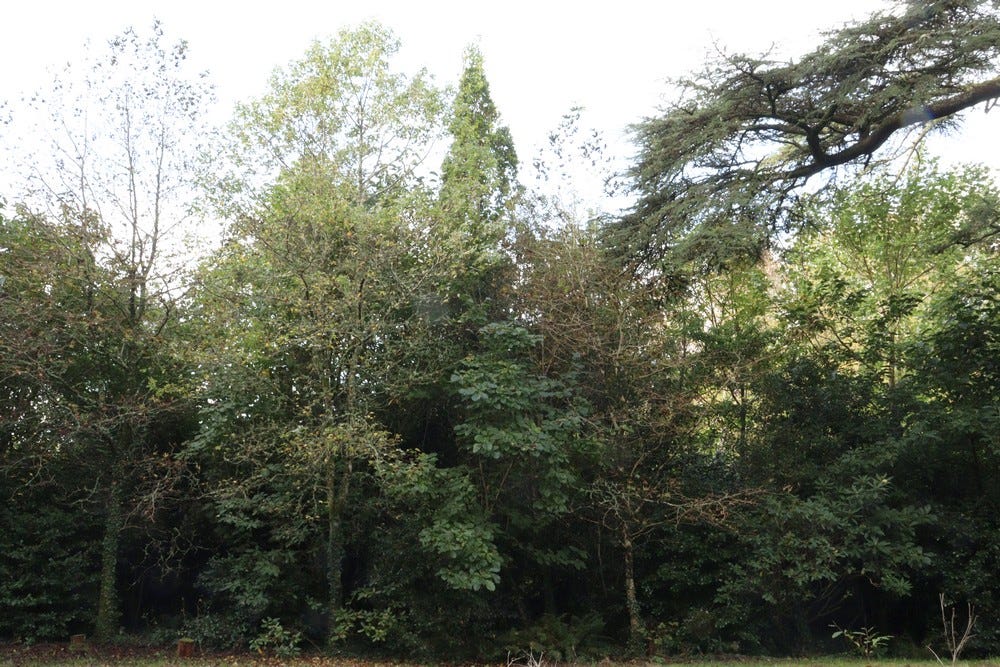Garden T is a privately owned estate in Cornwall. From its dramatic topography to the remnants of its 19th century planting, it's a site on which it should really be nigh-on impossible to create anything other than an iconic garden.
And yet the garden is a very uncomfortable, rather at odds with itself. The 19th century planting and the landscape hold the garden together, but the modern planting fits uncomfortably with that already established. The part of the garden that really makes an impression is the river that thunders violently down dramatic wild waterfalls from moorland above, to eventually join the Tamar and go out to sea at Plymouth. This area is considered within the boundary of the garden but it's not actually gardened; it's a window on the wild between two gardened areas.
The modern planting lets the garden down. The owners are proud of their collection of trees, but the layout is more reminiscent of a nursery closing down sale. There's no plan, no cohesion. Trees appear to have been randomly planted wherever there's room. A classic example of the 'plonk and plant' method of garden planning, with plants scattered in the hope that they might make a garden in time.
It raises in my mind one of the most challenging questions in gardening: what is a garden?
We all know what a garden is. We can picture it, real or imaginary, and say “yes that is a garden”. But how would we define a garden if put on the spot?
A garden is a managed and cultivated space: yes. A garden is associated with a home: not always. It's not that we can't say what a garden is, more that any definition is blurred by exceptions. A garden is cultivated, but so is a field. A garden is for pleasure, but can also be primarily cultivated for food. A garden is deliberately planted, but there are a few gardens around where the gardener gently readjusts what nature supplies. The vagueness of answers reflects the fact that gardens are enormously varied.
As indeed are gardeners.
A garden should have a purpose, a vision. That vision may be a vision of grandeur, long straight borders of regimented planting and lots of hedges and statues, or it might be a wilder-looking space. It could also be virtually anything in between; it's all fine. Where people often go wrong, and this is as much an issue in large gardens as smaller ones, is they try to do too much. So many gardens are themed around those of large country estates: the vegetable patch represents the kitchen garden, the pond represents the boating lake, narrow strip borders to reflect the vast borders of the country house garden, and a lawn that's a fraction of the size seen in bigger gardens. Nowadays we like to have a mini meadow to reflect the bigger meadows elsewhere. Oh and don't forget an arboretum too.
These are all things you can have in a garden, not things that you must have.
Trying to do everything is unwise; having lots of different elements takes a lot of space and effort to achieve well. Devoting too little time and space to each thing leaves your garden chaotic and difficult to manage. It's better to choose what is important to you and do that well rather than trying to bring together too many themes. If you like the idea of growing food for the table make a good, proper-sized vegetable garden. Sure there ways to get high yields from small areas of garden, but it's so much better to have space in your productive garden to do things well. If you like trees devote a good area of your ground to growing trees, not just a token corner. Herbaceous borders are so much more dramatic when they're long and deep, not narrow strips where plants look uncomfortably restricted.
The other side of this is to avoid the things you don't want. If you don't want to grow food then don't have a productive garden. If you don't want herbaceous borders don't have them, likewise trees, wildflower areas... anything. Just because other people have these things doesn't mean you must too. Your garden should be centred around what you want, not what you think is expected of you.
Arranging plants well is vitally important. There are those who take great pride in throwing away the rules of garden planning. Great! A lot of the rules gardeners have been following are unhelpful to say the least. However it's really worth fully understanding the rules in the first place. To rewrite the rules you must first know your subject.
With herbaceous borders we often try to get away from the old way of putting the big plants at the back, the small plants at the front and everything else arranged in graduated order in between. Gardeners of old liked their borders arranged like seats in a theatre, but we now like to mix things up a bringing some of the tall elements from the back into the middle tier to vary the heights a bit. It's a good idea too, by and large. Daring gardeners might use big but ethereal plants in the front of the borders, and the open nature of such plants means they can be very dramatic.
These principles don't apply with woody plants. Mixing up trees and shrubs so that small or slow species end up hidden by larger of faster ones is a recipe for chaos. Large plants in the herbaceous borders die back to the ground each year and come up again in spring, resetting any seasonal imbalances, but woody plants build new growth on top of old each year and get bigger and bigger. A slow growing plant will soon be overtaken by a fast growing neighbour, forcing the gardener to prune the neighbour, move the slow growing plant, or leave them and let nature take its course. It's a situation that should really be avoidable with forethought and planning.
It should also be fairly obvious to any but the very-most novice gardeners. However I'm dealing with the result of this lack of careful planning in one of the gardens I care for. As at Garden T, trees and shrubs were put together with little to no forethought. Now, some 25 years or so later, the result is a garden rammed with too many woody plants. Camellias, magnolias, oaks, flowering dogwoods and all sorts of other plants jostle for attention, with smaller plants swallowed up by faster growing species. Much of my gardening is done with a saw here. I must edit out some plants to let others thrive, but how to choose when, unlike Garden T, everything here is desirable and there is a good case for trying to keep it all. The haphazard planting of Garden T does at least mean there are less than premium plants mixed in among the gems, although whether clearing these would create useful space in time is entirely up for debate.
This challenge is what they face at Garden T. There will come a time when the young plants become so crowded that they must be thinned; will there be anyone around ruthless enough to choose which will live and which will die? I'm sure the aim is to try and find a shortcut to reach the maturity of other big old Cornish gardens (many of which have had to undergo thinning operations over the years too). Garden T could have done this by focussing solely on faster growing trees and shrubs, assigning key areas for slower plants to grow together. This is what Robert and Suzette Vernon did at the Bluebell Arboretum near Ashby-de-la-Zouch in Derbyshire. Not wanting to build an arboretum they would never see mature, the Vernons planted a core of faster growing trees and shrubs with space in between for more choice and slower species. The big plants grew quickly to give structure, impact and a sense of maturity but they could still indulge their interests in the slower growing plants.
The Bluebell model would have worked really well at Garden T, giving the owners a sense of a maturing arboretum far more quickly. Instead they've ended up with a chaotic mix of slower and faster growing trees and shrubs. Deciduous rhododendrons (azaleas) appear in disorganised clumps, while a random planting of autumn camellias looks like aborted attempts to plant hedges. The owners have tried to put so many features into each area that the result is chaos.
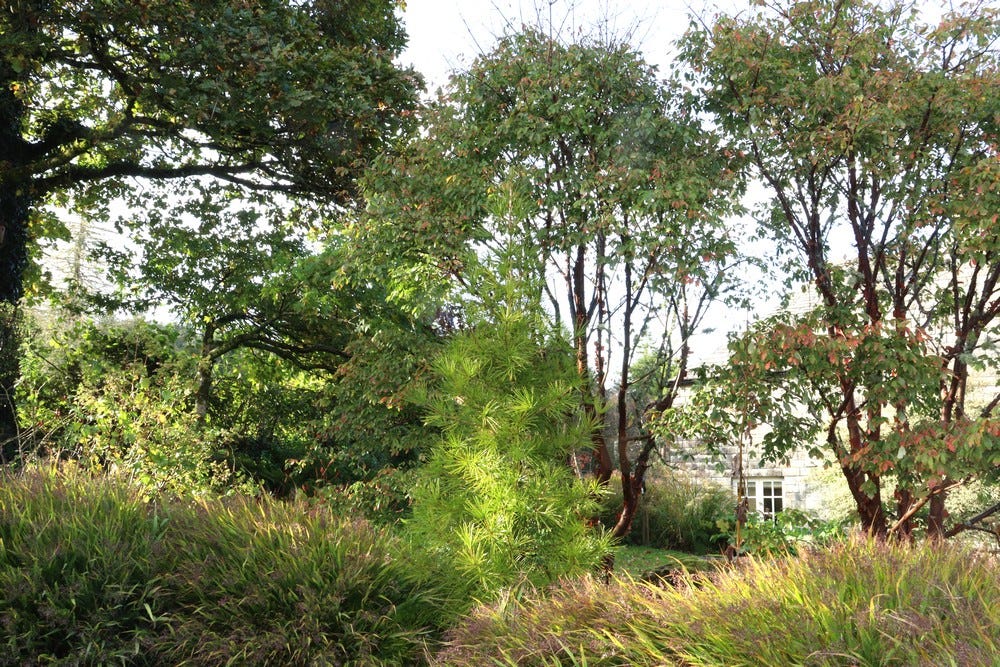
The owners are heading into trouble over the coming years as errors in the planting become more abundantly clear. What's sad is that when the point arrives and all becomes obvious they will have spent a lot of time, effort and money on this project, and that this could have been saved through more cohesive planning.
Time, effort and money they won't get back.
The modern planting at Garden T serves as a warning to us all that while herbaceous plantings are fairly easy to alter even when they're mature, trees and shrubs are a greater commitment and warrant greater attention to their positioning. This is why visiting other gardens is so important, and doing so with a critical eye; garden visiting not only gives us the opportunity to take inspiration from things done well, but also serves as a warning that there's much more to creating a garden than just amassing a collection of plants.

